Cassava cake with macapuno is a traditional Filipino dessert made of grated cassava, coconut milk, condensed milk and macapuno, which is soft, chewy coconut meat. It’s a popular merienda (snack) or dessert and is often served during special occasions like Christmas and fiestas. Learn how to make this easy Filipino treat!
(Looking for other easy merienda ideas? Try homemade taho, refreshing mango sago or soft and chewy pichi pichi. Very easy to make and so delicious!)

My mom makes the best cassava cakes. The cake is soft and tender and the topping is perfectly sweet and toasted.
But like a lot of moms, she doesn’t have a recipe for it. She just knows. Which frustrates the heck out of me because I wasn’t born with that magic baking and cooking talent; I need a recipe! LOL!
Anyway, after years (yes, years) of trying and, with the help my friend C who thankfully wrote down her recipe, I finally have a recipe of my own.
My recipe is simpler and more straightforward than other cassava cake recipes, only uses 1 bowl and no mixer necessary!
I think my mom’s cake is still the best. But this is delicious and pretty dang close.
Why you’ll love this recipe
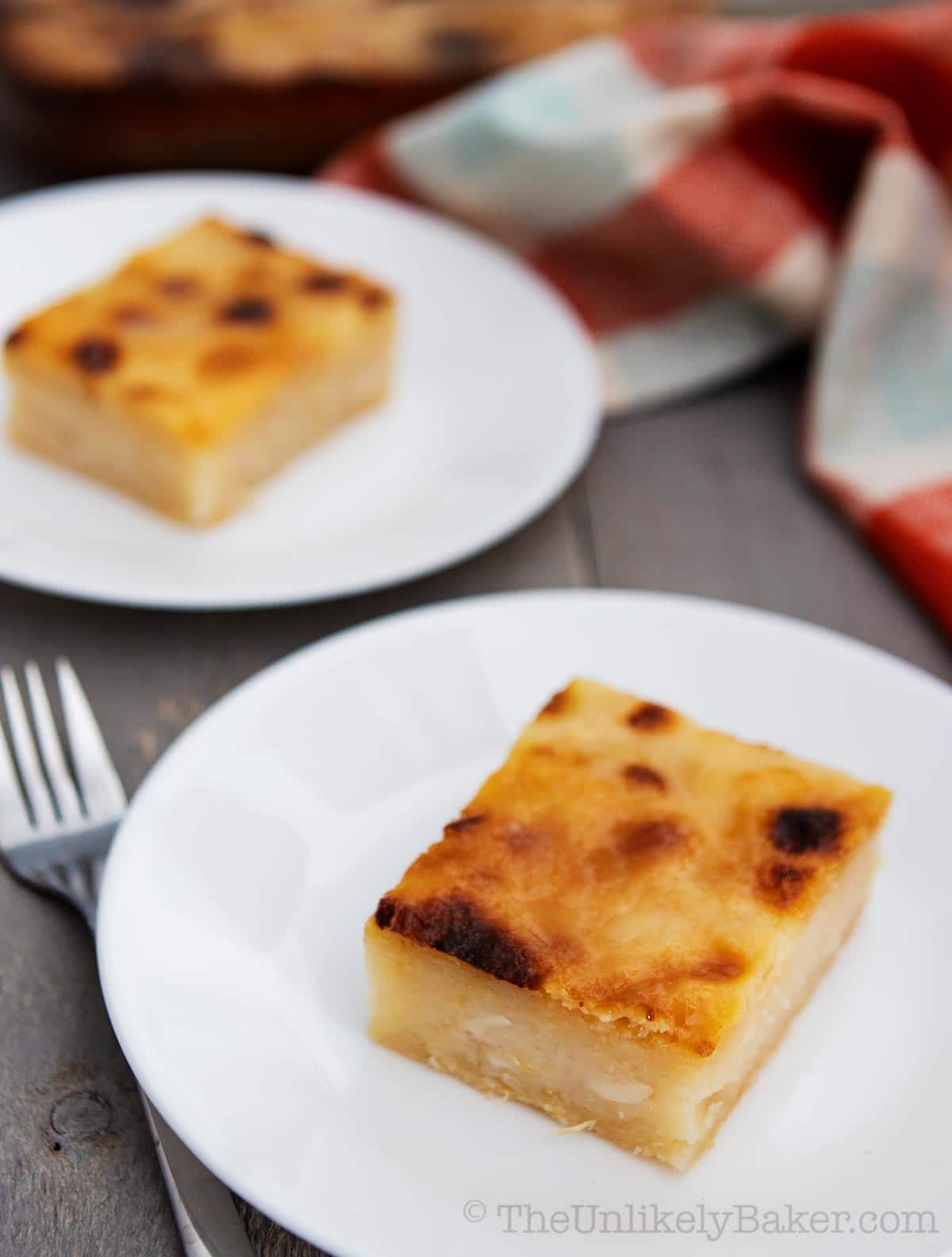
Cassava cake is one of my favorite things to bake and eat. Hope you like it, too!
- Simple recipe. You don’t need a mixer and you’ll only need 1 bowl. All you really need to do is mix everything, transfer to a baking dish, and bake!
- Fool-proof. It’s also very hard to make a mistake here. There are no special techniques required, no special equipment needed, perfect for bakers of all levels.
- Delicious. Best of all, it’s delicious. Better than what you can find in stores. No surprise that it’s one of the best-loved recipes on the blog.
How to make
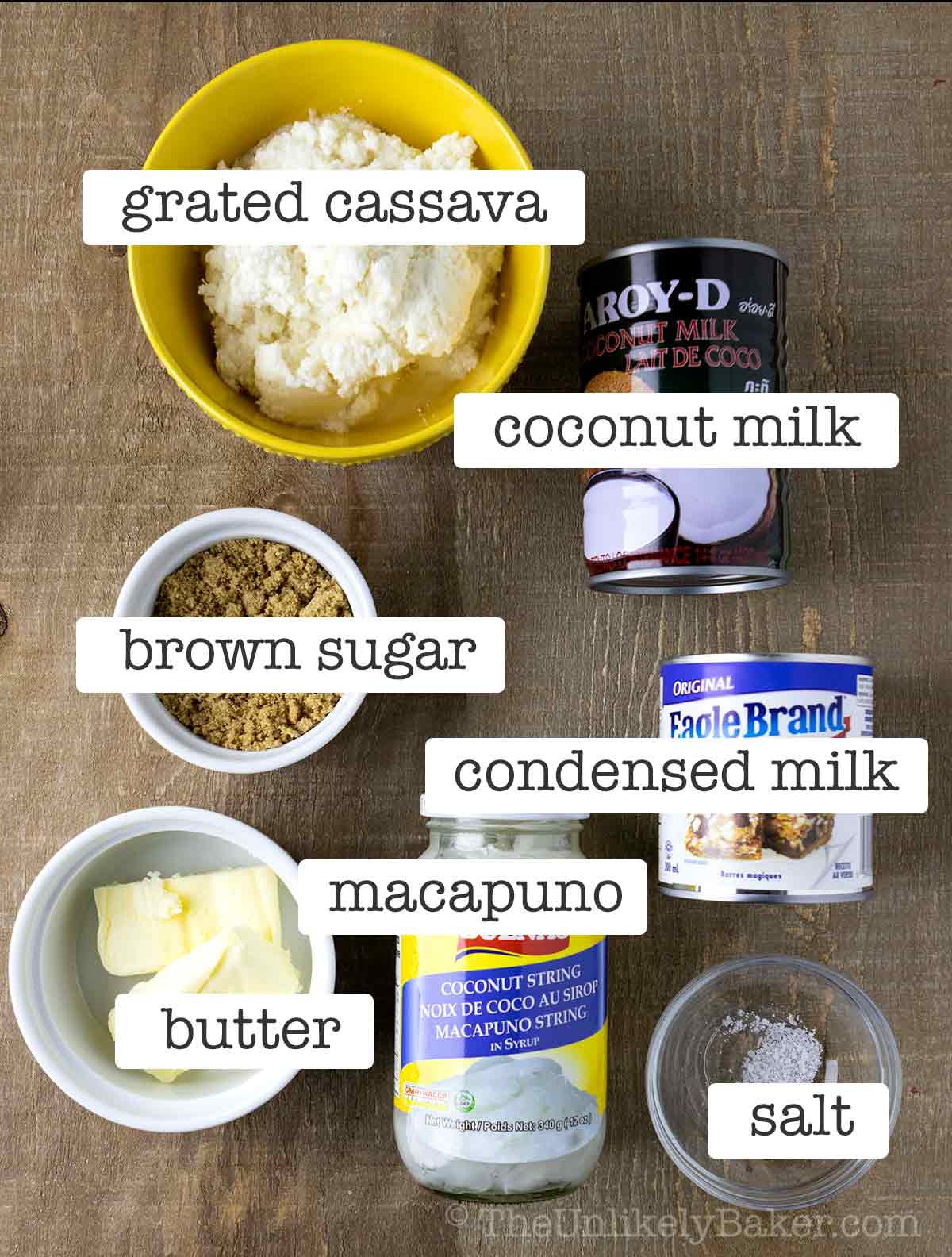
Ingredients
You can find all the ingredients for Filipino cassava cake at your local Asian supermarket:
- Frozen grated cassava (you can also use fresh cassava and just grate it yourself using a cheese grater or a food processor)
- Jarred macapuno in syrup
(same one used in macapuno balls)
- Canned coconut milk
(again, if you have access to fresh coconut milk, go for it!)
- Sweetened condensed milk
- Brown sugar
- Unsalted butter
- Salt
You’ll notice that this recipe doesn’t have eggs in it. Some cassava cake recipes do but I find that it’s unnecessary here.
(Find more info on cassava and macapuno in the FAQs below.)
Baking tools
I don’t use a mixer here. I mix everything by hand and only use 1 bowl. Makes for easy clean-up!
So you’ll only need your basic baking tools, like:
- Mixing bowl
and spoon
- Spatula
- 9×13 inch baking dish
(I always use a glass baking dish)
Step-by-step photos
First, preheat your oven to 350F and grease a 9×13 inch baking dish with baking spray. Set aside.

Place all your ingredients in a large bowl.

Stir until combined.

Transfer the batter to your baking dish.

Bake for 45 minutes to an hour or until the sides are puffy, starting to brown and the centre is set. It’s okay if the top of the cake is still bubbling.

Take the cassava cake out of the oven (careful, it’s hot!) and spread condensed milk on top.

Place back in the oven and continue to bake until the top has caramelized. You can also choose to broil instead to help speed up the caramelization. Just make sure to watch the cake so it doesn’t burn. Allow the cake to cool before serving warm.
Expert baking tips

Easy, right? Here are more tips for perfect cassava cake every time.
1. Don’t over-bake. This is a very forgiving recipe. It’s hard to over mix the batter; but you can over bake the cake. Which makes it tough and rubbery. So watch for signs that it’s done baking like golden brown edges.
2. Don’t over-broil. Also watch that you don’t burn the topping. Broiling is a great shortcut but don’t leave it while it’s broiling. Watch your cake like a hawk because the top turns brown fast.
3. Watch baking time. If you don’t have a glass baking dish, you can use an aluminum baking pan but note that your baking time will be different. Check at the halfway mark.
Recipe FAQs
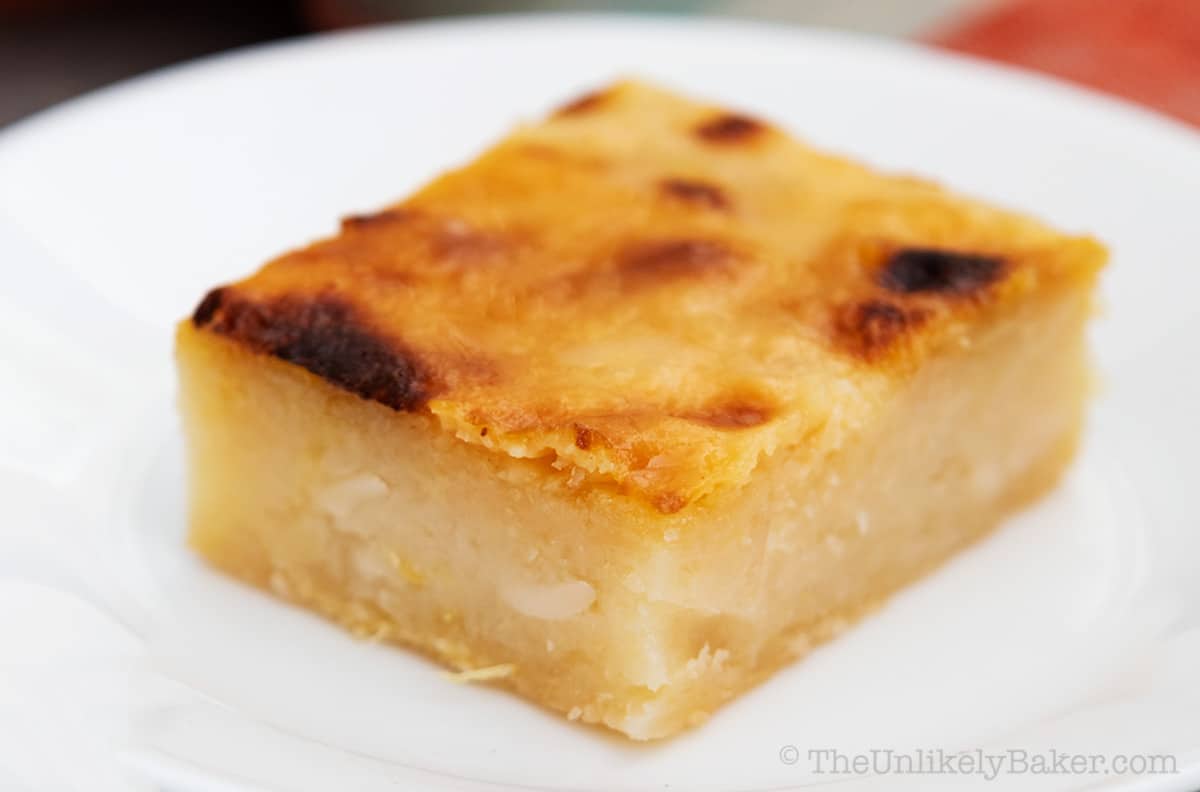
Cassava is a nutty-flavoured, starchy root vegetable. In North America, it’s often called yuca and may also be referred to as manioc or Brazilian arrowroot.
Cassava is native to the Philippines and other tropical regions of the world because it has the ability to withstand difficult growing conditions; in fact, it’s one of the most drought-tolerant crops.
It’s popular in Filipino cooking but it’s important to note that cassava must be cooked properly because raw cassava can be poisonous. Read more about it here.
Anyhow, you might already be familiar with cassava because cassava root is what’s used to produce the tapioca pearls in our bubble teas.
Cassava flour has also been gaining popularity because it’s a healthier alternative for people with diabetes, high blood pressure or high cholesterol.
In this cassava cake recipe with macapuno, we use grated cassava and not cassava flour.
You might also be wondering what macapuno is. If you google it, you will come across words like coconut sport, mutant and freak.
Don’t be scared lol! This just means that instead of the usual solid coconut flesh, the coconut where macapuno comes from produces meat that is softer, more translucent, almost like jelly.
In fact, macapuno is considered a delicacy in the Philippines and is made into different kinds of treats like candy and ice cream. In this recipe, we’re using bottled macapuno in syrup.
Yes! This is an egg-free recipe. I find the addition of eggs unnecessary here.
If you want clean, perfect squares, it’s best to cut the cassava cake once it’s fully cooled.
In the photos, I achieved those clean edges by refrigerating the cake first before cutting. It’s best served warm though so I just microwave the slices for about 20 seconds right out of the fridge.
You can store cassava cake in the fridge and it will last up to a week.
Just keep in mind that cassava cake tends to get rubbery the longer it sits so best to consume it within 3 days.
This cassava cake recipe with macapuno is really so easy to make there’s no excuse not to make it all the time!
Whether for everyday merienda or to serve to company, it’s sure to be a hit with everyone.
And if you love cassava cake, you’ll love royal bibingka too! Check it out.
Happy baking!
Did you make cassava cake with macapuno? I’d love to hear from you in the comments section below.
And check out this delicious list of must-try Filipino desserts if you’re looking for more ideas.
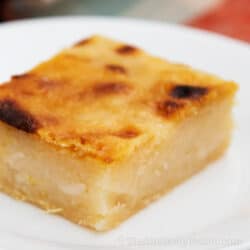
Filipino Cassava Cake with Macapuno
Ingredients
- 2 16-oz packs frozen grated cassava thawed
- 1 11-oz jar macapuno in syrup drain as much as of the syrup as you can
- 1 14-oz can coconut milk
- 1 10-oz can condensed milk divided
- 5 tbsp brown sugar
- ¼ cup unsalted butter softened
- pinch salt
Instructions
- Preheat oven to 350F. Grease a 9×13 inch baking dish and set aside.
- In a large bowl, stir all ingredients – but only half of the condensed milk – until combined. Smush the softened butter to the sides of the bowl to make sure it is incorporated.2 16-oz packs frozen grated cassava, 1 11-oz jar macapuno in syrup, 1 14-oz can coconut milk, 1 10-oz can condensed milk, 5 tbsp brown sugar, ¼ cup unsalted butter, pinch salt

- Pour the batter into your prepared dish and bake for about 1 hour or until the edges start turning puffy and golden brown and the centre is set. It's okay if the top of your cake is still bubbling.

- Carefully remove the cake from the oven – keep the oven on – and spread the rest of the condensed milk on top. Try to spread it as evenly as you can.1 10-oz can condensed milk

- Continue to bake your cassava cake until the top is caramelized. You can also choose to broil on low for a few minutes to help with the caramelization. Just remember to watch your cake because broiling can easily burn it.

- Remove from oven and allow to cool in baking dish before cutting into squares and serving. Best served warm.
Video
Notes
- When dividing your condensed milk, simply eyeball it. Pour half into your cassava mixture and reserve the other half for your topping.
- If you want clean, perfect squares, it’s best to cut the cassava cake once it’s fully cooled. In the photos, I achieved those clean edges by refrigerating the cake first before cutting. It’s best served warm though so I just microwave the slices for 20 seconds or so out of the fridge.
- See post for more tips, FAQs and step-by-step photos.
Nutrition
Nutritional information are estimates only.

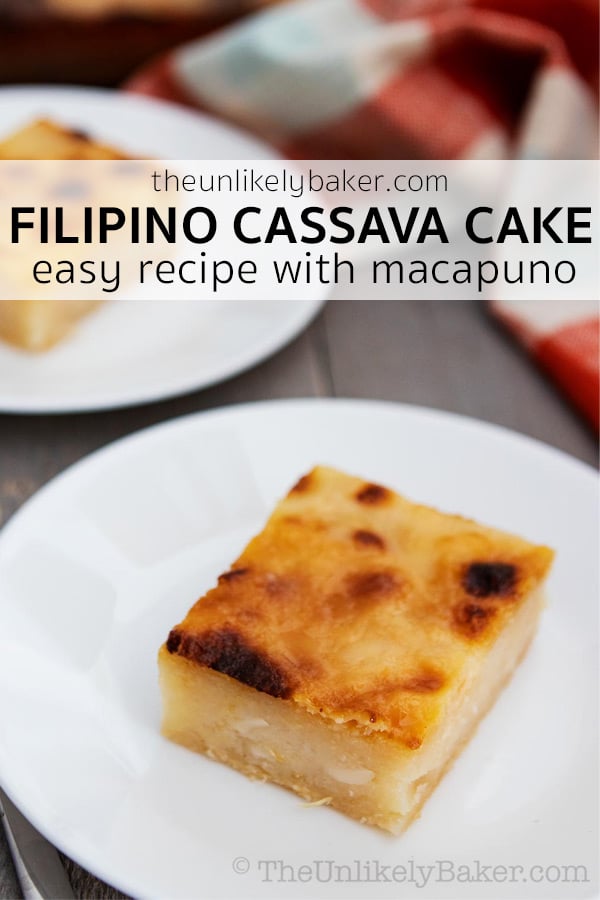

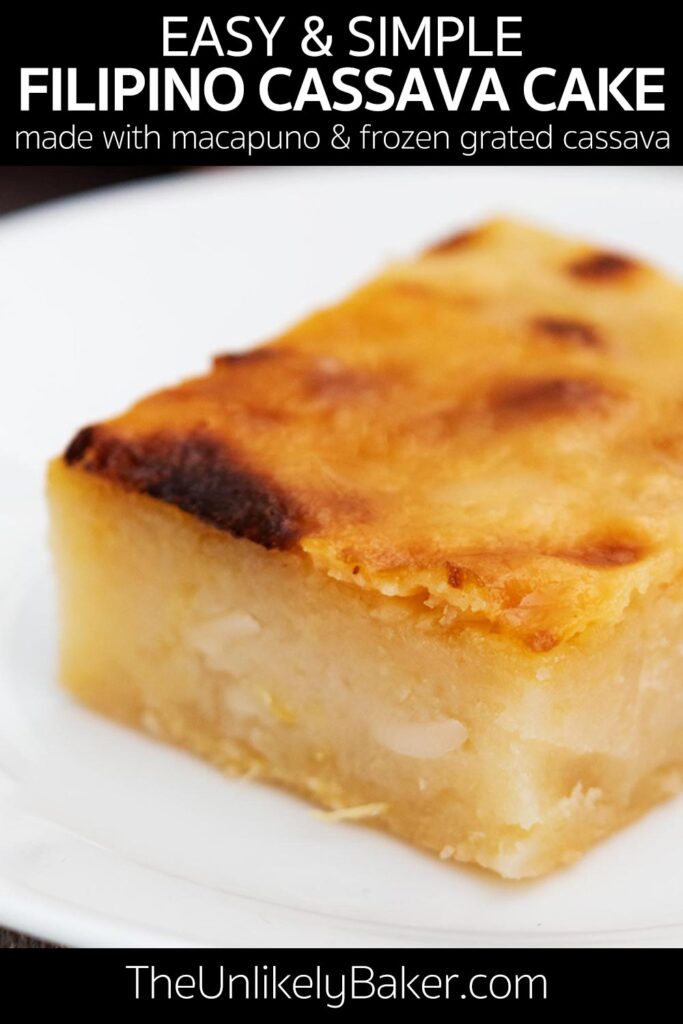


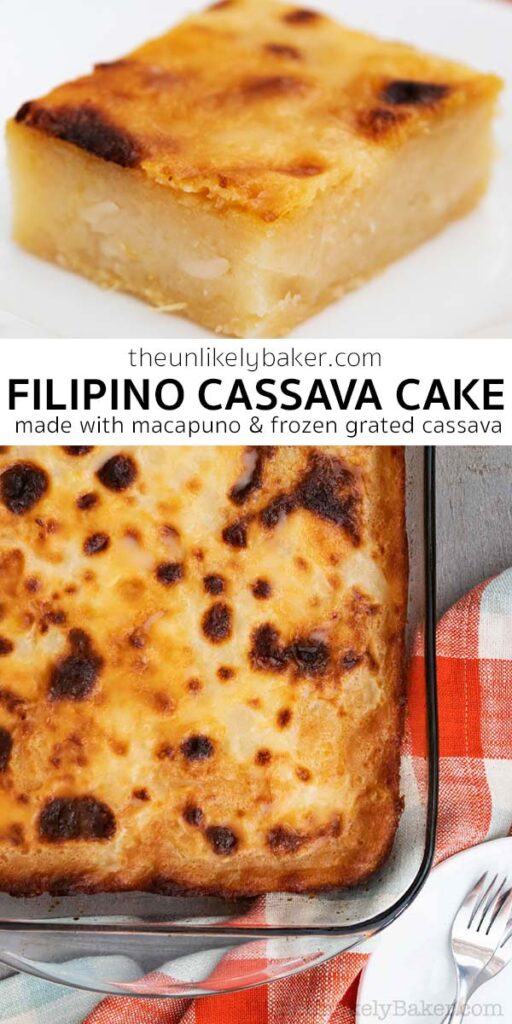

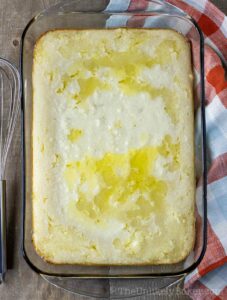


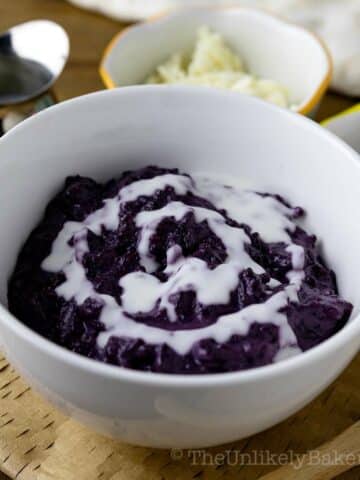
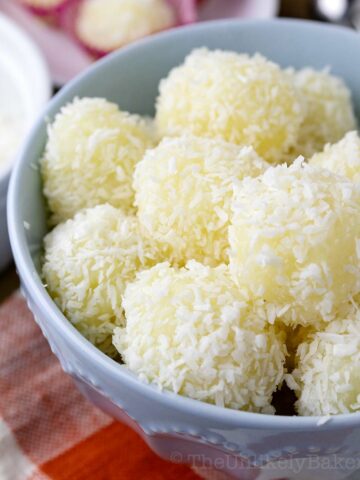

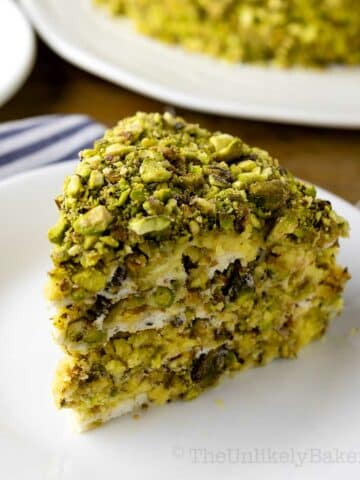
Swathi
I love cassava, need to try this cassava cake. I usually use cassava in savory dishes not in sweet dishes.
Rose
Looks good! Similar to what my mother makes. Can’t wait to make the recipe 🙂
Tasheena
This looks really yummy. I can’t wait to give it a try.
Catalina
Deliciousness! Love how creamy this cassava cake is!
Rena McDaniel
I have never heard of it before but it looks delicious. I have to give it a try.
Kathy
I’ve never tried this or heard of this before. It looks really good though. I definitely want to try it sometime soon. I can’t wait to see what it tastes like.
Marysa
I have never had this kind of cake before, but I think I have had cassava. This sounds like an interesting and delicious dessert.
Lynndee
Yummy! It’s been a while since I made cassava. Time to make one again.Thanks for the reminder. 🙂
Gervin Khan
I’ve never eaten one of this but then I stumbled here and told my sister to make one and I swear it’s very delicious! Thanks to this post.
Jolina
Glad you liked it!
Louisa
Yummy looking!!! I am going to give this a try, and I hope it tastes as good as it looks.
Jolina
It does I promise! 🙂
Mary
This cassava cake looks so delicious and it’s my first time of hearing about it. Thanks for sharing the recipe.
Pam Wattenbarger
We’ve had Cassava cake before in the Domincan Republic and it was delicious. I’d love to make it at home and now I can!
Harriet
This is so unique! I like trying new cuisines. Hope I can find all the ingredients I need.
Jolina
Your best bet would be any Asian supermarket or the international aisle of your supermarket 🙂
Elizabeth
Hi. I can’t have butter. Is there an alternative I could use?
Mel
Another Filipino favorite! I’m learning to appreciaate Filipino cuisine.
Amber Myers
I’ve never tried this before. It looks and sounds tasty and I always like to try new things.